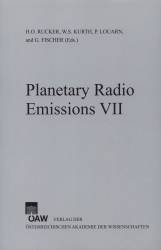
Planetary Radio Emissions VII, pp. 495-504, 2011/12/28
Proceedings of the 7th International Workshop on Planetary, Solar and Heliospheric Radio Emissions held at Graz, Austria, September 15–17, 2010

The Nançay radio astronomy observatory and associated laboratories are developing the concept of a “Super Station” for extending the LOFAR station now installed and operational in Nan¸cay. The LOFAR Super Station (LSS) will increase the number of high sensitivity long baselines, provide short baselines and an alternate core, and be a large standalone instrument. It will operate in the low frequency band of LOFAR (30–80 MHz) and extend this range to lower frequencies. Three key developments for the LSS are described here: (i) the design of a specific antenna, and the distribution of such antennas (ii) at small-scale (analog-phased mini array) and (iii) at large-scale (the whole LSS).